50g
Showing 1–50 of 320 results
-

(-)-Carveol
$782.44 Add to cart View Product Details(-)-Carveol
-

(+/-)-Abscisic Acid
$23,092.66 Add to cart View Product Details(+/-)-Abscisic Acid
-

1-(Trimethylsilyl)-1-hexyne
$416.42 Add to cart View Product Details1-(Trimethylsilyl)-1-hexyne
-

1-Heptanesulfonic Acid Sodium Salt, Monohydrate
$472.13 Add to cart View Product Details1-Heptanesulfonic Acid Sodium Salt, Monohydrate
-

1,3-Dichloroacetone
$171.60 Add to cart View Product Details1,3-Dichloroacetone
-

1H-Pyrazole-1-carboxamidine Hydrochloride
$352.77 Add to cart View Product Details1H-Pyrazole-1-carboxamidine Hydrochloride
-
![2-[2-(2-Chloroethoxy)ethoxy]ethanol](https://advatechgroup.com/wp-content/uploads/2025/12/xplaceholder-300x300.webp.pagespeed.ic.hBXhrd0OfG.webp)
2-[2-(2-Chloroethoxy)ethoxy]ethanol
$267.88 Add to cart View Product Details2-[2-(2-Chloroethoxy)ethoxy]ethanol
-

2,3,6,7,10,11-Hexahydroxytriphenylene
$2,970.77 Add to cart View Product Details2,3,6,7,10,11-Hexahydroxytriphenylene
-

2′,6′-Dihydroxyacetophenone
$452.24 Add to cart View Product Details2′,6′-Dihydroxyacetophenone
-
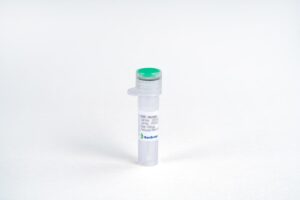
2B4/CD244 Fc Chimera, Human
$103.50 Add to cart View Product DetailsCD244 (Cluster of Differentiation 244) is a human protein encoded by the CD244 gene. It is also known as Natural Killer Cell Receptor 2B4. This gene encodes a cell surface receptor expressed on natural killer cells (NK cells) (and some T cells) mediating non-major histocompatibility complex (MHC) restricted killing. The interaction between NK-cell and target cells via this receptor is thought to modulate NK-cell cytolytic activity. Alternatively spliced transcript variants encoding different isoforms have been found for this gene. CD244 can also be expressed on non-lymphocytes such as eosinophils, mast cells and dendritic cells.
-

3-Methylcyclopentane-1,2-dione
$307.67 Add to cart View Product Details3-Methylcyclopentane-1,2-dione
-
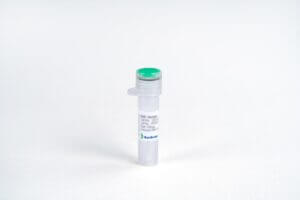
4-1BB (CD137) Fc Chimera, Human
$103.50 Add to cart View Product Details4-1BB(CD137) is a member of the tumor necrosis factor (TNF) receptor family. Mature human 4-1BB consists of a 163 amino acid extracellular domain (ECD) with four TNFR cysteine‑rich repeats, a 27 aa transmembrane segment, and a 42 aa cytoplasmic domain; 4-1BB (CD137) is expressed as a disulfide-linked homodimer on various populations of activated T cell including CD4+, CD8+, memory CD8+, NKT, and regulatory T cells as well as on myeloid and mast cell progenitors, dendritic cells, mast cells, and bacterially infected osteoblasts. It binds with high affinity to the transmembrane 4-1BB Ligand/TNFSF9 which is expressed on antigen presenting cells and myeloid progenitor cells. This interaction co stimulates the proliferation, activation, and/or survival of the 4-1BB expressing cell. It can also enhance the activation-induced cell death of repetitively stimulated T cells.
-

5 Percent Rhodium on Activated Carbon Powder, Reduced, Water Wet, 27 microns, BASF Catalyst
$1,738.06 Add to cart View Product Details5 Percent Rhodium on Activated Carbon Powder, Reduced, Water Wet, 27 microns, BASF Catalyst
-

5 Percent Rhodium on Alumina Powder, Reduced, Dry, 70 microns, BASF Catalyst
$3,700.21 Add to cart View Product Details5 Percent Rhodium on Alumina Powder, Reduced, Dry, 70 microns, BASF Catalyst
-

Adiponectin, Human(CHO-expressed)
$194.06 Add to cart View Product DetailsAdiponectin is an important adipokine involved in the control of fat metabolism and insulin sensitivity. It is synthesized exclusively by adipocytes and secreted into plasma. It antagonizes THF-alpha by negatively regulating its expression. It also inhibits endothelial NF-kappa-B signaling through a cAMP-dependent pathway. Adiponectin can form low molecular weight complexes (LMW), middle molecular weight complexes (MMW) and higher molecular weight complexes (HMW). These bind to various growth factors, such as HBEGF, PDGFB and FGF2, and play a role in cell growth, angiogenesis and tissue remodeling.
-

Adiponectin, Mouse
$194.06 Add to cart View Product DetailsAdiponectin is a hormone mainly produced by adipocytes. Adiponectin forms a homotrimer and exists as higher order multimers in vivo. The receptors of Adiponectin are seven transmembrane G protein coupled receptors: Receptor 1 is expressed in skeletal muscle and Receptor 2 in liver. Adiponectin receives a lot of attention because of its anti-diabetic, anti-atherosclerotic, and anti-inflammatory properties. Adiponectin increases the expression of molecules involved in fatty acid transport, combustion of fatty acid, and energy dissipation, and increases insulin sensitivity of the body. Decreased levels of Adiponectin are associated with hypertension, cardiovascular diseases, and metabolic syndromes. Therefore, Adiponectin has promising potential as a pharmacological agent.
-

Adiponectin/Acrp30, Human
$194.06 Add to cart View Product DetailsAdiponectin is an important adipokine involved in the control of fat metabolism and insulin sensitivity. It is synthesized exclusively by adipocytes and secreted into plasma. It antagonizes THF-alpha by negatively regulating its expression. It also inhibits endothelial NF-kappa-B signaling through a cAMP-dependent pathway. Adiponectin can form low molecular weight complexes (LMW), middle molecular weight complexes (MMW) and higher molecular weight complexes (HMW). These bind to various growth factors, such as HBEGF, PDGFB and FGF2, and play a role in cell growth, angiogenesis and tissue remodeling.
-

AITRL, Mouse
$224.25 Add to cart View Product DetailsActivation-Inducible TNF-Related Ligand (AITRL), also known as Glucocorticoid-Induced TNF-Related Ligand (GITRL), belongs to the tumor necrosis factor superfamily (TNFSF). AITRL is a Type II single transmembrane protein and shares low conservation within the extracellular domain with other TNFSF members. AITRL is expressed on macrophages, immature and mature dendritic cells and B cells. Its receptor, Activation-Inducible TNFR family Receptor (AITR), is expressed on T lymphocytes, natural killer (NK) cells, and antigen- presenting cells. After binding by AITRL, AITR can be released. AITR activation increases resistance to tumors and viral infections and is involved in autoimmune and inflammatory processes. In addition, activated AITR increases TCR-induced T cell proliferation and cytokine production and rescues T cells and NK cells from apoptosis.
-

Ammonium Cerium(IV) Nitrate
$54.23 Add to cart View Product DetailsAmmonium Cerium(IV) Nitrate
-

Ammonium Tetrathiomolybdate
$974.76 Add to cart View Product DetailsAmmonium Tetrathiomolybdate
-

Amphiregulin, Human
$86.25 Add to cart View Product DetailsAmphiregulin is a member of the EGF family of cytokines, which comprises at least ten proteins including EGF, TGF-α, HB-EGF, Epiregulin, Tomoregulin, Neuregulins and the various heregulins. Through the EGF/TGF-α receptor, it stimulates growth of keratinocytes, epithelial cells and some fibroblasts. Amphiregulin also inhibits the growth of certain carcinoma cell lines. Synthesized as a transmembrane protein, Amphiregulin’s extracellular domain is proteolytically processed to release the mature protein.
-
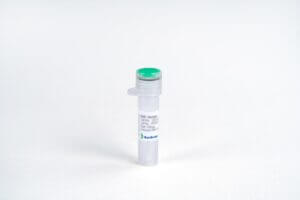
Annexin V, His, Human
$142.31 Add to cart View Product DetailsANXA5, also known as annexin V, is a member of the annexin family of calcium-dependent phospholipid binding proteins which are involved in membrane-related activity along exocytotic and endocytotic pathways. ANXA5 is a phospholipase A2 and protein kinase C inhibitory protein with calcium channel properties. It functions in signal transduction, inflammation, cell growth and differentiation. ANXA5 is an anticoagulant protein that acts as an indirect inhibitor of the thromboplastin-specific complex, which is involved in the blood coagulation cascade. There are at least ten different annexins in the mammalian species. Annexins do not contain signal peptides, yet some annexins (A1, A2 and A5) appear to be secreted in a physiologically regulated fashion.The binding of labeled ANXA5 to phosphatidylserine is commonly used as a marker of apoptosis.
-

April, Mouse
$146.63 Add to cart View Product DetailsA Proliferation-inducing Ligand (April)) also known as TNSF13A, Tall-2, and TRDL-1, is a member of the TNF ligand (TNFL) superfamily. April is most similar to B-cell activation factor (BAFF) with which it shares 30% sequence identity, compete for two receptors, TACI and BCMA. APRIL is expressed at low levels in lymphoid tissue and is over-expressed by a number of tumors. April has a proliferative effect on both normal and tumor cell lines in vitro and in vivo. APRIL seems to be involved in the regulation of death and proliferation of tumor cells, but there are still contradictory findings regarding its overall biological effects.
-

B7-1(CD80) Fc Chimera, Human
$137.14 Add to cart View Product DetailsB7-1/CD80 and B7-2/CD86, together with their receptors CD28 and CTLA-4, constitute one of the dominant co-stimulatory pathways that regulate T- and B-cell responses. Although both CTLA-4 and CD28 can bind to the same ligands, CTLA-4 binds to B7-1 and B7-2 with a 20-100 fold higher affinity than CD28 and is involved in the down-regulation of the immune response. Mature human B7-1 consists of a 208 amino acid extracellular domain (ECD) with two immunoglobulin-like domains, a 21 amino acid transmembrane domain, and a 25 amino acid cytoplasmic domain. Both human and mouse B7-1 and B7-2 can bind to either human or mouse CD28 and sCTLA-4. B7-1 is expressed on activated B cells, activated T cells, and macrophages. B7-2 is constitutively expressed on interdigitating dendritic cells, Langerhans cells, peripheral blood dendritic cells, memory B cells, and germinal center B cells.
-

BAFF-R, Human
$163.88 Add to cart View Product DetailsBAFF Receptor (BAFF-R), a member of the TNFR superfamily, is highly expressed in spleen, lymph node, and resting B cells and to some extent in activated B cells, resting CD4+ cells and peripheral blood leukocytes. BAFF-R is a type III transmembrane protein that binds with high specificity to BAFF (TNFSF13B). BAFF-R/BAFF signaling plays a critical role in B cell survival and maturation.
-

BAFF, Human
$194.06 Add to cart View Product DetailsB-cell activating factor, also known as BAFF, TALL-1, TNAK, and zTNF4, is a member of theTNF ligand superfamily designated TNFSF13B. Produced by macrophages, dendritic cells, and T lymphocytes, BAFF promotes the survival of B cells and is essential for B cell maturation. BAFF binds to three TNF receptor superfamily members: B-cell maturation antigen (BCMA/TNFRSF17), transmembrane activator and calcium-modulator and cyclophilin ligand interactor (TACI/TNFRSF13B) and BAFF receptor (BAFF R/BR3/TNFRSF 13C). These receptors are type III transmembrane proteins lacking a signal peptide. Whereas TACI and BCMA bind BAFF and another TNF superfamily ligand, APRIL(a proliferation-inducing ligand), BAFF R selectively binds BAFF. The BAFF R extracellular domain lacks the TNF receptor canonical cysteine-rich domain (CRD) and contains only a partial CRD with four cysteine residues. Human and mouse BAFF R share 56% aa sequence identity. BAFF R is highly expressed in spleen, lymph node and resting B cells. It is also expressed at lower levels in activated B cell, resting CD4+ T cells, thymus and peripheral blood leukocytes.
-

Benzyl Nicotinate
$347.50 Add to cart View Product DetailsBenzyl Nicotinate
-

Berberine Sulfate
$580.92 Add to cart View Product DetailsBerberine Sulfate
-

Betacellulin, Human
$155.25 Add to cart View Product DetailsBetacellulin (BTC) is a member of the EGF family of growth factors that also includes EGF, TGF-α, Amphiregulin, HB-EGF, Epiregulin, Tomoregulin, Heregulin and Neuregulins. Mature human BTC protein exhibits 80% amino acidsimilarity with mouse BTC protein. BTC is expressed in most tissues including kidney, uterus, liver and pancreas. It is also present in body fluids, including serum, milk, and colostrum. It is synthesized primarily as a transmembrane precursor, which is then processed to a mature molecule by proteolytic events. BTC signals through the EGF receptor.
-

Betacellulin, Human
$155.25 Add to cart View Product DetailsBetacellulin (BTC) is a member of the EGF family of growth factors that also includes EGF, TGF-α, Amphiregulin, HB-EGF, Epiregulin, Tomoregulin, Heregulin and Neuregulins. Mature human BTC protein exhibits 80% amino acidsimilarity with mouse BTC protein. BTC is expressed in most tissues including kidney, uterus, liver and pancreas. It is also present in body fluids, including serum, milk, and colostrum. It is synthesized primarily as a transmembrane precursor, which is then processed to a mature molecule by proteolytic events. BTC signals through the EGF receptor.
-

Betacellulin, Mouse(HEK 293-expressed)
$155.25 Add to cart View Product DetailsBetacellulin (BTC) is a member of the EGF family of growth factors that also includes EGF, TGF-α, Amphiregulin, HB-EGF, Epiregulin, Tomoregulin, Heregulin and Neuregulins. Mature human BTC protein exhibits 80% amino acidsimilarity with mouse BTC protein. BTC is expressed in most tissues including kidney, uterus, liver and pancreas. It is also present in body fluids, including serum, milk, and colostrum. It is synthesized primarily as a transmembrane precursor, which is then processed to a mature molecule by proteolytic events. BTC signals through the EGF receptor.
-

Bismuth Sulfide, -100 Mesh
$619.34 Add to cart View Product DetailsBismuth Sulfide, -100 Mesh
-

BMP-2, Human
$263.06 Add to cart View Product DetailsHuman Bone Morphogenetic Protein-2 (BMP-2) is a bone-growth regulatory factor and belongs to the transforming growth factor-beta (TGF-beta) superfamily. Human Bone Morphogenetic Protein-2 (BMP-2) is synthesized as large precursor molecule (Met1-Arg396, with a signal peptide from Met1 to Gly23), propeptide (Leu24-Arg282) of which is cleaved by PCSK5 (Proprotein Convertase Subtilisin/Kexin type 5). The active form consists of a dimer of two identical proteins which are linked by a disulfide bond at Cys360. It plays an important role in the development of bone and cartilage, cardiac cell differentiation and epithelial to mesenchymal transition. It is also involved in the hedgehog pathway, TGF-beta signaling pathway, and in cytokine-cytokine receptor interaction.
-

Bovine Serum Albumin, Fraction V – Standard Grade
$138.28 Add to cart View Product DetailsBovine Serum Albumin, Fraction V – Standard Grade
-

Bupropion Hydrochloride Powder – 50G
$64.40 Add to cart View Product DetailsCAS Number 31677-93-7 Molecular Weight 276.20 Molecular Formula C13H18ClNO · HCl -

Cab-O-Sil(R) M-5, Scintillation Grade
$149.21 Add to cart View Product DetailsCab-O-Sil(R) M-5, Scintillation Grade
-

Cardiac Troponin I (cTnI), His, Human
$99.19 Add to cart View Product DetailsCardiac Troponin I (cTnI) is a subtype of the troponin family that is commonly used as a marker for myocardial damage. Cardiac troponin I is specific for cardiac tissue and is detected in the serum only if myocardial injury has occurred. Because cardiac troponin I is a very sensitive and specific indicator of heart muscle (myocardium) damage, serum levels can be used to help differentiate between unstable angina and myocardial infarction (heart attack) in people with chest pain or acute coronary syndrome.
-

Cathepsin L, Human
$266.51 Add to cart View Product DetailsCathepsin L is an enzyme. Cathepsin L, a lysosomal endopeptidase expressed in most eukaryotic cells, is a member of the papain-like family of cysteine proteinases. Cathepsin L plays a major role in antigen processing, tumor invasion and metastasis, bone resorption, and turnover of intracellular and secreted proteins involved in growth regulation. Unlike the precursor forms of other papain family members, the 43 kDa pro-cathepsin L itself is secreted from various cells. Pro-cathepsin L is the major excreted protein of malignantly transformed mouse fibroblasts and is also one of the major acidic cysteine proteases in mammalian cells.
-
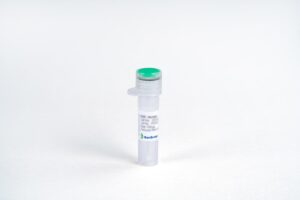
CD160 Fc Chimera, Human
$103.50 Add to cart View Product DetailsCD160 is a glycosylphosphatidylinositol-anchored Ig domain protein that is expressed on almost all intestinal intraepithelial lymphocytes (IELs), γδ T (gamma delta T) cells, NK (natural killer) cells, and a minor subset of CD4+ and CD8+ T cells. In terms of function, work has centered on the role of CD160 in enhancing NK or CD8 T cell activation. Such effects have been attributed to the ability of CD160 to bind classical and nonclassical MHC class I molecules, although with apparent low affinity, requiring clustering of MHC class I molecules or overexpression of CD160 or MHC class I for detection of the interaction.
-

CD19 Fc Chimera, Human
$237.19 Add to cart View Product DetailsCD19 is a 95 kDa coreceptor, which amplifies the signaling cascade in B cells. On the B cell surface, CD19 associates with CD21, CD81 and Leu-13 to exert its function. The cytoplasmic tail of CD19 has nine conserved tyrosine residues playing critical roles in CD19 mediated function by coupling signaling molecules to the receptor. Mature human CD19 consists of a 272aa extracellular domain (ECD) with two Ig-like domains, a 22aa transmembrane segment, and a 243aa cytoplasmic domain.
-
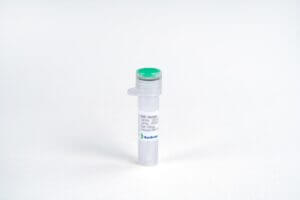
CD24 Fc Chimera, Human
$137.14 Add to cart View Product DetailsSignal transducer CD24 also known as cluster of differentiation 24 or heat stable antigen CD24 (HSA) is a protein that in humans is encoded by the CD24 gene. CD24 is a cell adhesion molecule. CD24 is a sialoglycoprotein expressed at the surface of most B lymphocytes and differentiating neuroblasts. It is also expressed on neutrophils and neutrophil precursors from the myelocyte stage onwards. The encoded protein is anchored via a glycosyl phosphatidylinositol (GPI) link to the cell surface. The protein also contributes to a wide range of downstream signaling networks and is crucial for neural development. Cross-linking of CD24 on the surface of neutrophils induces apoptosis, and this appears to be defective in sepsis.
-

CD24 Fc Chimera, Mouse
$137.14 Add to cart View Product DetailsSignal transducer CD24 also known as cluster of differentiation 24 or heat stable antigen CD24 (HSA) is a protein that in mouse is encoded by the CD24 gene. CD24 is a cell adhesion molecule. CD24 is a sialoglycoprotein expressed at the surface of most B lymphocytes and differentiating neuroblasts. It is also expressed on neutrophils and neutrophil precursors from the myelocyte stage onwards. The encoded protein is anchored via a glycosyl phosphatidylinositol (GPI) link to the cell surface. The protein also contributes to a wide range of downstream signaling networks and is crucial for neural development. Cross-linking of CD24 on the surface of neutrophils induces apoptosis, and this appears to be defective in sepsis.
-

CD25/IL-2Rα Fc Chimera, Human
$301.88 Add to cart View Product DetailsThe IL-2 receptor system consists of three non-covalently linked subunits termed IL-2Rα, IL-2Rβ, and IL-2Rγ. The IL-2Rα is a type I transmembrane protein consisting of a 219 amino acid (a.a.) extracellular domain, a 19 a.a. transmembrane domain and a 13 a.a. intracellular domain, which is not involved in the transduction of IL-2 signal. Activated T cells, regulatory T cells (Tregs) and NK cells express high levels of CD25 and expression of the high-affinity IL-2Rα is mostly limited to these cell populations. Signaling via IL-2Rα mediates multiple biological processes in various cell populations, e.g. proliferation and differentiation of B cells and NK cells. A soluble form of IL-2Rα (IL-2Rα) appears in serum, concomitant with its increased expression on cells. The function of the soluble IL-2Rα is unclear. Increased levels of IL-2Rα in biological fluids reportedly correlate with increased T and B cell activation and immune system activation. Increased serum concentration of IL-2Rα has been observed in patients with a variety of inflammatory conditions and in the course of some leukemias and lymphomas.
-

CD38, Human
$103.50 Add to cart View Product DetailsCD38 (also referred to as T10 antigen) is a nonlineage-restricted type II transmembrane glycoprotein that has emerged as an intracellular calcium ion mobilizing messenger. It can serve as an ectoenzyme that catalyzes the synthesis and hydrolysis of cyclic ADP-ribose. The enzymatic functions of CD38 probably contribute to an array of its immunoregulatory functions. It has been found on the surface of many immune cells (white blood cells), including CD4+, CD8+, B lymphocytes and natural killer cells. Soluble CD38 and the ability of membrane-bound CD38 to become internalized in response to appropriate stimuli suggest that extracellular and intracellular roles for this protein are equally plausible.
-

CD40L/CD154/TRAP, Human
$159.56 Add to cart View Product DetailsCD40 Ligand (CD40L/CD154/TRAP) is a membrane glycoprotein and differentiation antigen expressed on the surface of T-cells. The CD40 ligand stimulates B-cell proliferation and secretion of all immunoglobulin isotypes in the presence of cytokines. It also costimulates proliferation of activated T-cell and this is accompanied by the production of IFN-γ, TNF-α, and IL2. CD40 ligand has been shown to induce cytokine production and tumoricidal activity in peripheral blood monocytes.
-
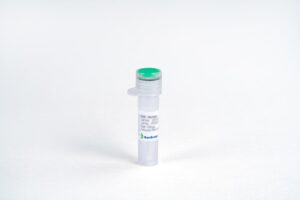
CD96, His, Human
$137.14 Add to cart View Product DetailsCD96 (Cluster of Differentiation 96), also known as Tactile (T cell activation, increased late expression), is a receptor protein which is expressed on T cells and NK cells and shares sequence similarity with CD226 (also known as DNAM-1). The main ligand of CD96 is CD155 and CD96 competes with CD226 for binding to CD155. This protein belongs to the immunoglobulin superfamily and may play a role in the adhesive interactions of activated T and NK cells during the late phase of the immune response. It may also promote NK cell-target adhesion by interacting with PVR present on target cells and function in antigen presentation.
-

CEA Fc chimera, Human
$138.00 Add to cart View Product DetailsCarcinoembryonic antigen (CEA) also known as Carcinoembryonic antigen-related cell adhesion molecule 5 (CEACAM5), CD antigen CD66e, Meconium antigen 100, is an oncofetal glycoprotein that is normally expressed by mucosal cells. CEA is a member of the immunoglobulin (Ig) superfamily of proteins. CEA is a glycophosphatidylinositol- (GPI-) linked membrane-anchoring protein that is exposed to the cell surface that faces the extracellular matrix. The membrane-anchoring region of CEA can be cleaved by phospholipase C and phospholipase D. The cleaved products are soluble and circulating through blood vessels. Thus, CEA can be present as secreted and cell surface-anchored forms. CEA is functionally associated with cellular interaction, cell adhesion, immune response, anoikis resistance, and promotion of liver metastasis. CEA overexpression is associated with many types of cancers including gastrointestinal, respiratory, and genitourinary system and breast cancers.
-

CEA, His, Human
$138.00 Add to cart View Product DetailsCarcinoembryonic antigen (CEA) also known as Carcinoembryonic antigen-related cell adhesion molecule 5 (CEACAM5), CD antigen CD66e, Meconium antigen 100, is an oncofetal glycoprotein that is normally expressed by mucosal cells. CEA is a member of the immunoglobulin (Ig) superfamily of proteins. CEA is a glycophosphatidylinositol- (GPI-) linked membrane-anchoring protein that is exposed to the cell surface that faces the extracellular matrix. The membrane-anchoring region of CEA can be cleaved by phospholipase C and phospholipase D. The cleaved products are soluble and circulating through blood vessels. Thus, CEA can be present as secreted and cell surface-anchored forms. CEA is functionally associated with cellular interaction, cell adhesion, immune response, anoikis resistance, and promotion of liver metastasis. CEA overexpression is associated with many types of cancers including gastrointestinal, respiratory, and genitourinary system and breast cancers.
-

Chloramphenicol
$129.21 Add to cart View Product DetailsChloramphenicol
-

Chloroform-d, 99.8 Atom Percent D
$102.61 Add to cart View Product DetailsChloroform-d, 99.8 Atom Percent D






